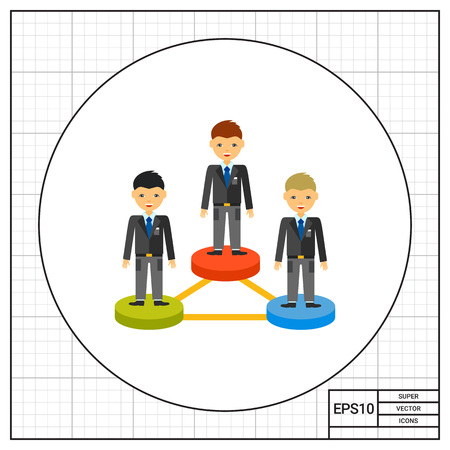1. Understanding the Role of Third-Party Apps in E-Commerce
Running an e-commerce store in the U.S. is more than just listing products and waiting for customers to check out. Today, it’s about creating seamless shopping experiences, staying ahead of competitors, and making your operations as efficient as possible. That’s where third-party apps and extensions come into play.
What Are Third-Party Apps and Extensions?
Third-party apps and extensions are tools developed by independent companies that you can add to your online store platform—like Shopify, WooCommerce, or BigCommerce—to expand its features. These aren’t built into your main e-commerce software, but they plug right in to help you do things your original system can’t.
Why Do U.S. E-Commerce Stores Use Them?
Think of third-party apps like helpful gadgets for your business. Whether you want to improve marketing, handle inventory, or offer new payment options, there’s an app for almost everything. In the fast-paced U.S. market, these tools help stores:
| Need | How Third-Party Apps Help |
|---|---|
| Streamline Operations | Automate order processing, manage shipping, and simplify accounting tasks. |
| Boost Sales | Add upsell/cross-sell features, recover abandoned carts, or launch loyalty programs. |
| Stay Competitive | Integrate with trending marketplaces (like Amazon or Walmart), use advanced analytics, and adopt the latest marketing tools. |
Examples You’ll See Everywhere
If you shop online in the U.S., chances are you’ve interacted with stores using apps for chat support (like Tidio), reviews (like Yotpo), or email marketing (like Klaviyo). These integrations make shopping smoother for customers—and running a store less stressful for owners.
The Bottom Line: Essential for Growth
In today’s competitive e-commerce landscape in the U.S., relying only on built-in store features isn’t enough. Third-party apps and extensions are essential for making your store more efficient, customer-friendly, and ready to grow.
2. Must-Have Apps and Extensions for U.S. Online Stores
Running an e-commerce store in the U.S. means you’ll want the right tools to deliver a seamless shopping experience that American customers expect. Here are the essential app categories and popular solutions you should consider to power up your store:
Payment Processing
Making checkout easy and secure is a top priority. In the U.S., customers are used to fast, reliable payment options.
| App/Extension | Main Features | Why Americans Love It |
|---|---|---|
| Shopify Payments | Integrated payments, fraud analysis, no third-party fees | Fast payouts, supports major cards, trusted by many stores |
| PayPal | One-click checkout, buyer protection, wide acceptance | Familiar name, quick transactions, peace of mind for buyers |
| Stripe | Customizable checkout, recurring billing, mobile-friendly | Sleek interface, great for subscriptions and tech-savvy shoppers |
Shipping Solutions
American shoppers expect tracking and speedy delivery. These apps can help you meet those demands:
| App/Extension | Main Features | What’s Great for U.S. Stores |
|---|---|---|
| ShipStation | Multi-carrier support, batch label printing, branded tracking pages | Easily integrates with USPS, UPS, FedEx—top U.S. carriers |
| Easyship | Real-time shipping rates, automated tax/duty calculations, worldwide options | Makes cross-border shipping simple for U.S.-based sellers expanding globally |
| AfterShip | Shipment tracking, delivery notifications, analytics dashboard | Keeps customers in the loop with real-time updates—a must in the States! |
Marketing Tools
To connect with American customers and keep them coming back, smart marketing apps make all the difference.
| App/Extension | Main Features | How It Helps U.S. E-Commerce Stores |
|---|---|---|
| Klaviyo | Email & SMS campaigns, segmentation, personalized flows | Powers targeted promotions and cart recovery—favorites among U.S. shoppers |
| Privy | Email popups, exit-intent offers, sign-up forms | Catches visitors before they leave and grows your list fast! |
| LoyaltyLion | Loyalty programs, points & rewards system | Makes loyalty fun and engaging—Americans love earning perks! |
Customer Service Platforms
A responsive support system builds trust and keeps your ratings high.
| App/Extension | Main Features | Why U.S. Customers Appreciate It |
|---|---|---|
| Zendesk | Live chat, ticketing system, multi-channel support | Smooth communication across email, chat, and social—just how Americans like it! |
| Tidio | AI-powered chatbots, live messaging, integration with Messenger | Cuts response time and helps answer questions 24/7—very important in the U.S. market |
| Yotpo | User reviews collection, Q&A widgets, visual marketing tools | Americans love reading reviews before buying—this builds credibility fast! |
The Takeaway on Essential Apps for Your Store
If you want your online store to succeed in the competitive U.S. market, investing in these key categories—and choosing popular solutions—will help you attract new customers and keep them happy at every stage of their shopping journey.

3. Evaluating and Selecting the Right Tools
Choosing the right third-party apps and extensions is a big deal when it comes to growing your U.S. e-commerce store. You want tools that not only work smoothly with your current setup but also help you scale as your business grows. Here’s how you can make smart choices:
Check Compatibility With Your Platform
Before you hit install, make sure the app or extension works with your e-commerce platform—whether that’s Shopify, WooCommerce, BigCommerce, or another solution popular in the U.S. Check for official integrations and read user reviews from fellow American merchants to see if there are any common issues.
Quick Compatibility Checklist
| Question | Why It Matters |
|---|---|
| Is this app officially supported by my platform? | Ensures smooth installation and fewer headaches later. |
| Are there any known bugs with U.S. payment processors? | Keeps your checkout process running smoothly for American customers. |
| Does it support U.S.-specific features (like tax rates or shipping carriers)? | Makes sure you stay compliant and competitive locally. |
Assess Reliability and Support
An app might look great on paper, but reliability is key for U.S. shoppers who expect fast, trouble-free experiences. Look at how often the app is updated, its uptime statistics, and what kind of customer service the provider offers—24/7 live chat is a big plus for busy online stores.
What to Look For:
- User Reviews: Focus on feedback from other American businesses.
- Update Frequency: Frequent updates mean better security and new features.
- Support Channels: Email, chat, phone—find what works best for you.
- Transparent Policies: Make sure there are clear refund or cancellation policies in place.
Think About Scalability
Your business might be small today but could grow quickly tomorrow. Choose tools that can handle more traffic, more orders, and more products without slowing down. Ask about pricing tiers—some apps get expensive as you grow—and see if they offer trial periods or demos so you can test before committing.
| Scalability Feature | Why It’s Important |
|---|---|
| Handles High Traffic | Keeps your store running during peak sales events like Black Friday in the U.S. |
| Flexible Pricing Plans | You only pay for what you need now but can upgrade later as you grow. |
| Easy Data Migration | Saves time if you ever switch platforms or expand your catalog. |
Pro Tip: Prioritize What Matters Most to Your Customers
If most of your shoppers are in the U.S., focus on tools that improve local payment options, fast shipping integrations, and reliable customer support in American time zones. This way, every add-on truly adds value to your store experience.
4. Integrating Apps for a Seamless Customer Experience
Why Integration Matters for U.S. Shoppers
American consumers expect online shopping to be fast, easy, and enjoyable. When your e-commerce store uses multiple third-party apps and extensions, making sure they all work together smoothly is key. A well-integrated system helps avoid confusion, slow loading times, and errors that can turn customers away.
Best Practices for Managing Multiple Apps
1. Choose Compatible Apps
Before adding new apps or extensions, check if they work well with your current e-commerce platform (like Shopify, WooCommerce, or BigCommerce) and with each other. Look for reviews from other U.S. merchants to see if there are any reported conflicts or issues.
2. Prioritize User Experience
Focus on apps that directly improve the shopping experience for your American customers—such as one-click checkout, real-time shipping estimates, or local payment gateways like PayPal and Apple Pay. Too many features can clutter your site and overwhelm users.
3. Test Before Launching
Always test how new apps affect your website’s speed and layout. U.S. shoppers tend to leave websites that load slowly or look messy on their devices. Use tools like Google PageSpeed Insights to check performance after installing each app.
4. Keep Your Branding Consistent
Make sure all app interfaces match your store’s look and feel. Many third-party apps allow you to customize buttons, colors, and fonts to blend with your brand style—this makes your site feel more professional and trustworthy to American shoppers.
App Integration Checklist
| Step | What to Do | Why It Matters for U.S. Shoppers |
|---|---|---|
| Select Compatible Apps | Check integration support with your platform & existing apps | Avoids technical problems that frustrate customers |
| Customize Appearance | Edit styles to match your brand’s design | Makes the store feel familiar and trustworthy |
| Test User Flow | Try out the entire buying process as a customer would | Catches confusing steps before real shoppers see them |
| Monitor Performance | Regularly check site speed and error reports | Keeps the shopping experience fast and smooth for Americans who value convenience |
| Update Regularly | Keep all apps updated for security and compatibility | Protects customer data and ensures ongoing reliability |
Tips for Ongoing Management
- Avoid app overload: Only keep the extensions you truly need; too many can slow down your site.
- Create a backup plan: Always back up your site before installing or updating apps in case something goes wrong.
- Ask for feedback: Encourage U.S. customers to share what works well or causes problems during their shopping journey so you can keep improving.
- Stay updated on trends: Popular U.S.-based solutions (like Buy Now, Pay Later options) can make your store more appealing—keep an eye out for new integrations that suit American shoppers’ habits.
A thoughtful approach to integrating third-party apps not only streamlines operations behind the scenes but also builds trust and satisfaction among U.S. consumers—helping your e-commerce business thrive in a competitive market.
5. Staying Secure and Compliant
Why Privacy, Security, and Compliance Matter in the U.S.
When you’re running an e-commerce store in the United States, integrating third-party apps and extensions can give you an edge. But it’s not just about adding cool features or boosting sales — you also need to make sure your customers’ data is safe and that you’re following all U.S.-specific rules. Ignoring privacy, security, or compliance could mean fines, lost trust, or even getting shut down.
Key U.S. Standards for E-Commerce Stores
| Standard | What It Means | Who It Applies To |
|---|---|---|
| PCI DSS | Payment Card Industry Data Security Standard; protects credit card info | Any store accepting card payments |
| CCPA | California Consumer Privacy Act; gives California residents rights over their data | E-commerce businesses with CA customers or over $25M revenue |
| COPPA | Childrens Online Privacy Protection Act; protects kids under 13 online | Stores marketing to children under 13 |
| FTC Act Section 5 | Bans unfair or deceptive practices (including bad data handling) | All businesses operating in the U.S. |
Choosing Safe Third-Party Apps and Extensions
Not all apps are created equal. Before installing a new app, check if it:
- Makes clear how it uses customer data (look for a privacy policy)
- Offers encryption and secure data storage
- Keeps up with regular security updates
- Is well-reviewed by other U.S. merchants
- Allows you to control what data it accesses from your store
Questions to Ask App Providers:
- How do you store and protect my customers’ information?
- If there’s a data breach, how will I be notified?
- Do you comply with PCI DSS and CCPA?
- Can I delete or export my customer data if requested?
Your Role in Keeping Things Safe & Compliant
You’re responsible for what happens on your e-commerce site—even if a third-party app causes trouble. Here are simple steps to stay covered:
- Audit your apps regularly: Remove anything outdated or unused.
- Update permissions: Only allow access to necessary parts of your store.
- Create a clear privacy policy: Tell customers what third-party tools you use and why.
- Train your team: Make sure anyone managing apps knows about privacy basics.
- Keep records: Document which apps have access to sensitive info.
Quick Checklist: Stay Secure with Third-Party Apps in the U.S.
- Select apps with strong privacy policies & U.S. compliance badges
- Avoid apps that request unnecessary permissions or personal data access
- Suspend or remove risky apps immediately if issues arise
- Stay updated on changes in U.S. e-commerce laws and standards

